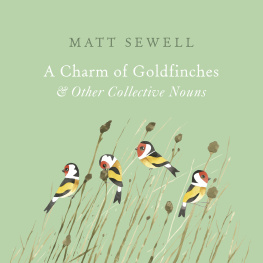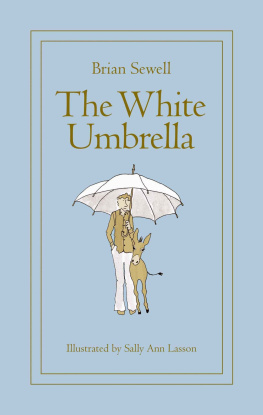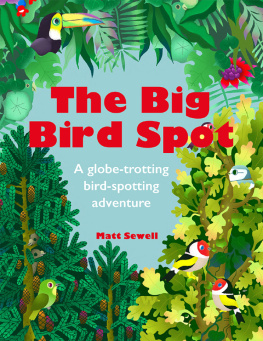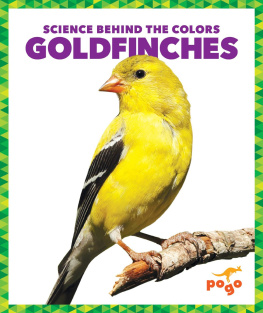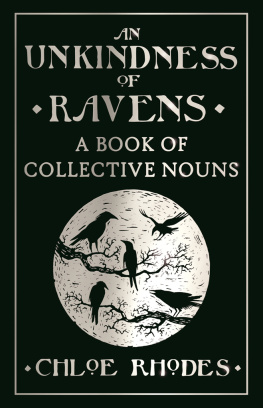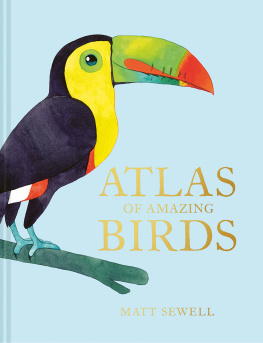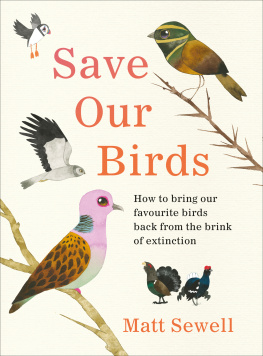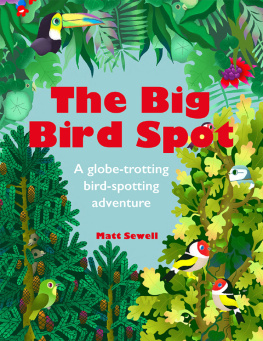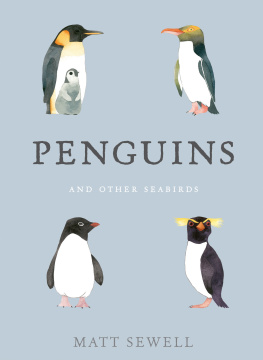About the Book
A charm of goldfinches, an ascension of larks, a school of dolphins, a cloud of bats, a murder of crows. All these and more are portrayed in this enchanting new book by much loved artist Matt Sewell, playing on the theme of collective nouns for animals.
Illustrated with Matts inimitable watercolours, and imbued with a love of his subjects that will resonate with people everywhere and of all ages, this book is a great gift for nature and art lovers.
Accompanying each illustration is a playful, quirky description of each groups personality that readers cannot help but smile at. Sewells unique witty take on the subject, and delicately vivid illustrations make for a lovely addition to his collection of pocketable books.
About the Author
Artist and illustrator Matt Sewell is an avid ornithologist, regular contributor to the Caught by The River website, and bestselling author. He has exhibited in London, Manchester, New York, Tokyo and Paris.
A Sleuth of
Bears
B EARS ARENT EXACTLY known for their social mobility and friendliness; they are rarely seen in groups outside of their feeding bonanzas and courtship battles. When bears meet outside of these occasions, it always turns nasty. Which is a shame, as they do look so affable, so soft and golden brown albeit with massive claws and dagger-like teeth and a bum big enough to frighten a police horse.
Brown bears were once found across northern Europe, particularly in Great Britain, but were gone in the UK by the Middle Ages, made extinct through hunting. It is with this sad fact in mind that we find the root of the bears odd collective noun: the term a sleuth of bears comes from the fourteenth-century Boke of St Albans , a book about hunting. When we think of a sleuth today, its a spy with upturned collars and hidden microphones, but the word originally comes from the sleuth hound, which is basically a bloodhound. Such dogs would have been used on the trail of the great brown bears: a bloodthirsty technique of hunting that surely saw off the last of the British bears and, sadly, is still in favour today for other species.
A Band of
Coyotes
A WOLF IN A FOXS clothing. With the coyotes orange tinges and white trimmings the uninitiated can be forgiven for placing the coyotes with the fox of the Canidae world, those sly tricksters of traditional Native American folktales. In fact coyotes are very much a paid-up North American member of the Canidae society in their own right, alongside the jackal, the dingo down under, the high-ranking grey wolf and of course our own pet pooches. Outside of their guarded family units, coyotes hang together in unrelated gangs, scavenging and doing whatever coyotes do, such as maybe forming a band.
Just like this lot here, posing for their self-titled debut album sleeve photo. They are a psychedelic, desert-rock three-piece, really, but an excited young fan has wrangled himself into the photo.
A Mob of
Emus
T HE AUSTRALIAN EMU is a big old brute, second in height only to the ostrich of Africa, another flightless bird with tiny wings and long fast-running legs. Nearly six foot tall and certainly not afraid to look you straight in the eye, emus roam wherever they want with their passive-aggressive manner, meaning you need to keep a cautious eye on a mob of emus at all times. They are like a bunch of locals who gatecrash your lovely fireside beach party. All weird haircuts and monobrows, theyre funny and quite charming at first until theyve drunk all your booze and things start to turn a bit nasty. So its probably best just to avoid eye contact from the get-go.
An Array of
Hedgehogs
L ED ZEPPELIN paid tribute to bustling hedgerows in Stairway to Heaven and I always sing along with my belief that its hedgehogs having a spring clean who are making all that racket. Though in the still of night a rustle of leaves and a grunt in the dark can conjure up a horrific host of cryptozoological beasts, in fact these sounds are all the clues you need to spot our spiny friends. The nocturnal mammals roam together for food and fun.
There are 17 different types of hedgehog in the world, mainly found in Europe, Africa and Asia. There are none in the Americas, but they do have their own spiky dude, the porcupine, which is similar to the echidnas of (also hedgehog-free) Australia; however, neither of these animals, although covered in spines, are related.
A Memory of
Elephants
A MEMORY IS A very sweet term but I hardly think it would be used in Tanzania or any of the other African countries with national parks, where elephants are present and correct. Commonly, elephants live together in herds, made up of females and their calves, plus young males. Everything is overseen by the leader, the old matriarch of the extended family, a powerful female elephant who could be up to sixty years old. It has long been believed that an elephant has a rock-hard memory, that they never forget, and, according to scientific research, the collective noun is apt. It is up to the matriarch to remember all the rare sources of water and food in times of drought and to recall all the elephants crossing their path, be they friend or foe. Its a brilliant fact and heres another one Elephants cant jump.

